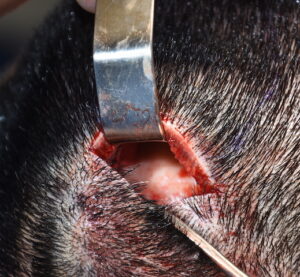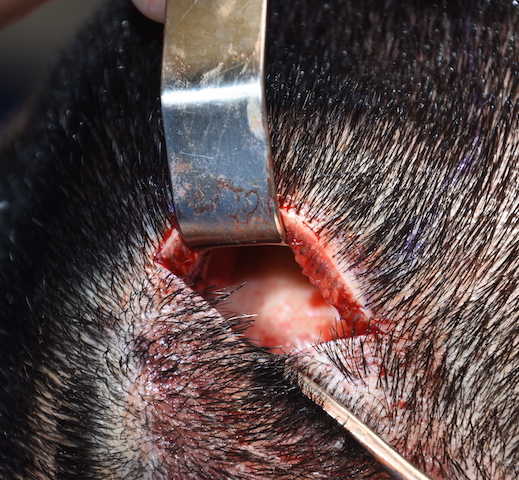One of the more common aesthetic skull reshaping procedures is that of the sagittal ridge or crest. This is a raised area of midline bone that occurs due to a thickened sagittal suture line. It almost always starts posteriorly and extends a variable distance forward. Most of the time its height decreases back to normal at the mid portion of the suture line. Some may call this a form frusta sagittal craniasynostosis.
But regardless of why it is there it is bothersome to the male who has it as it creates a visible disruption of the smooth convex profile of the top of the head in the frontal view. A peaked head shape appearance occurs that, while often being only 5mms or so high, is enough of an aesthetic distraction that some males seek its reduction.

This tunnel technique requires special retractors to allow the needed scalp retraction and the space need to allow the burring instrument to be introduced. Starting at the back end of the elevated sagittal ridge the depth of the reduction is established. Once that level is obtained the amount of bone reduction is carried forward until its front end is reached.

Dr. Barry Eppley
Indianapolis, Indiana



